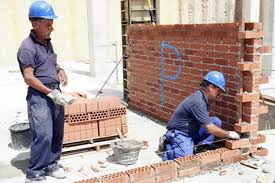1. Identifica los elementos del diccionario:
management: (m n
n
 j-m
j-m nt)managerial >
man·ag·er (m n-j r) s. (administrator) gerente m. f., director m.
(entertainer's agent) empresario, apoderado; deportes (trainer)
nt)managerial >
man·ag·er (m n-j r) s. (administrator) gerente m. f., director m.
(entertainer's agent) empresario, apoderado; deportes (trainer)
·
management
_____ a) abreviatura
·
(m n
n
 j-m
j-m nt)_____ b) referencia
nt)_____ b) referencia
·
s. _____ c)
entrada
·
deportes _____ d indicación regional
e) pronunciación
2. Selecciona en cuales palabras guías
se encuentran las siguientes palabras de entrada:
a) tool: tongue-top
, top-torpedo, torpid –touch
b) goal: glossy-
gnu. Go- goat, goate-golden
c) profit: proliferate-propaganda,
profess-proletariat, prose-prothesis
d) view: via-
virtual. Vidicon- vignette, viewy-vim
3.
Completa las oraciones que aparecen más abajo con las palabras del recuadro:
Palabras guías
Palabra de entrada
Pronunciación
Significado Etimología Significado
especializado
Abreviatura
|
1. Si quieres saber cómo decir una palabra en ingles
buscas la___________
2. La palabra que buscas es la__________________
3. Quieres
saber de dónde se origina la palabra: la____________te da la
respuesta
4. La___________te
indica si la palabra es un sustantivo o un verbo
5. Las_______________están
ubicadas en las esquinas de cada página
6. El
_____________te da el equivalente en español
7. Admon,
Med son ejemplos de__________________________
Some
have stated that the secret of concrete was lost for 13 centuries until 1756,
when the British engineer John Smeaton pioneered
the use of hydraulic lime in
concrete, using pebbles and powdered brick as aggregate. However, the Canal du Midi was
built using concrete in 1670. Likewise there are concrete structures in
Finland that date back to the 16th century. Portland cement was
first used in concrete in the early 1840s.
There are=hay
4. Escribe en inglés 10 cognados verdaderos tomados del
texto anterior:
5. Escribe en inglés y traduce al español los siguientes
cognados falsos tomados del texto:
·
lime (línea 2):
·
as (línea 3):
·
date (línea 5):
6. Identifica la función gramatical (sustantivo o verbo)
de las siguientes palabras tomadas del texto y traduce las frases completas:
·
John Smeaton pioneered:
·
the use of:
·
using pebbles and powdered brick:
7. Completa el
siguiente cuadro:
Cómo
aparece en el texto
|
Cómo
aparece en el diccionario
|
Traducción
al español de acuerdo con el contexto
|
centuries
|
century
|
siglos
|
stated
|
||
using
|
||
structures
|
||
used
|
||
easily
|
8. Traduce
al español las siguientes oraciones:
1. Engineers plan and build roadways.
2. Center the object within the viewing area:
3. Turn the Range Wheel until you notice the two
distinct images:
4. Focus by turning the Eyepiece slowly







